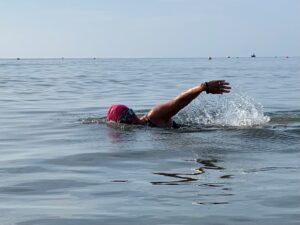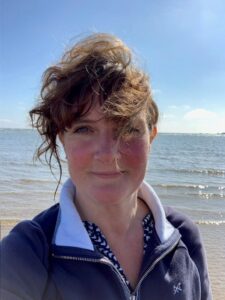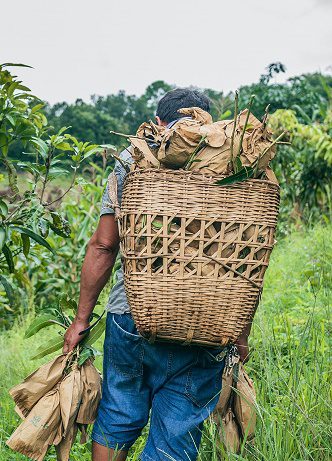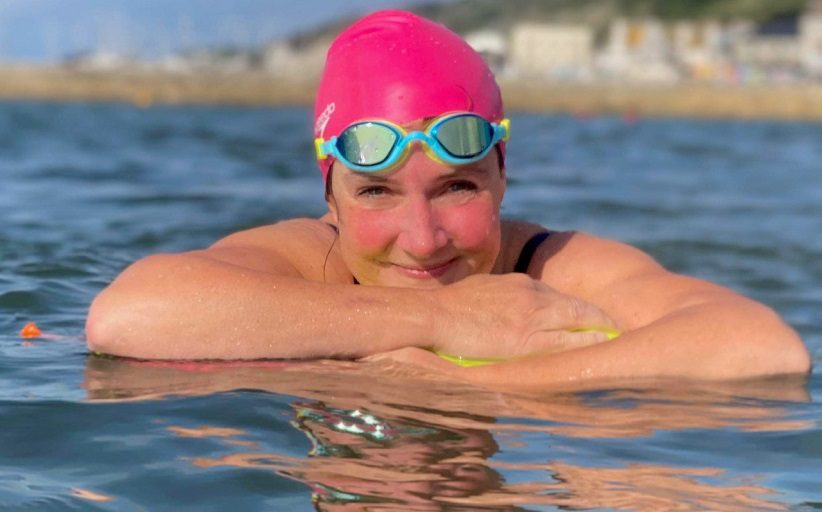Stephens wants her challenge to call attention to children being targeted for human trafficking in Northern Cambodia. Communities in this area experience some of the highest levels of poverty in the country. Because of this, migration for work across the border into nearby Thailand is common and human trafficking is profitable business. Children, unaware of the dangers, are easy targets – and their families and communities don’t know how to protect them. These situations frequently turn into cases of human trafficking, for children and adults, in the forms of debt bondage, forced labor, forced commercial sex, and more.
“Human trafficking flies under the radar. It is a very difficult topic to discuss, and yet this awful exploitation of human beings is the most profitable business in the world. To raise awareness for such an important issue, I felt I had to do something completely outside of my comfort zone,” Stephens said.

Getting out of her comfort zone meant first working past her fears. This past January, with support from family (including two daughters who are former competitive swimmers) and a no-nonsense coach, she dove right in. “When I first started my training back in January, I secured a local open swim coach; he’s the ‘Let’s get on with it; why can’t you breathe under water; no, you won’t choke and drown; and what do you mean you can’t you dedicate your life to four swim sessions a week?’ type.
“He’s tough, but I wouldn’t want to put myself at the mercy of the sea with anyone else. At our first lesson, he helped me start to overcome my very real fear of choking on water. I asked if he thought the challenge was achievable. He answered truthfully that it would take work but could be done. How right he was and still is.”
Stephen’s swim will cover two miles (3.2 km) in average sea temperatures of 62.6°F, or 17 °C. Week after week, she’s improved her endurance and breathing. One of her biggest focus areas has been learning to relax in the water. “That may sound easy, but it is my biggest mental sticking point as it relates to my breathing. I am having to learn to recapture that essence of why I love being in the water without overthinking it.”
Only 1 out of every 100
human trafficking victims is rescued
What she’s not overthinking is how critical it is to draw as much attention as possible to the human trafficking crimes. By conservative estimates, approximately 50 million people around the globe are affected by human trafficking each year. Only one out of every 100 victims is rescued. The A21 organization and advocates like Claire won’t stop until modern slavery ends.
Every day actions can end human trafficking
“I read somewhere that ‘No one person can do everything but every one of us can do something.’ This is my something,” Stephens said. “If taking a cold plunge isn’t quite the thing for the next person, then get educated, learn the signs and how to report them, speak up if you see something, and spread the word around your networks.”
Stephens works in BCD’s Global Client Team and is a member of the human trafficking committee. She was honored as BCD’s 2021 Woman of Distinction, in part for her efforts to drive a campaign that ultimately resulted in Modern Slavery training for over 91% of BCD staff globally.
Ask Claire

Question: How long does it take to train for this kind of swim?
Answer: I had my first lesson at the end of January but didn’t really start training properly until end of February.
Q: In total, how much time will you have spent training?
A: Nowhere near enough.
Q: What are you most proud of going into next month’s swim?
A: Learning to swim properly, overcoming some of my fears.
Q: What does training look like?
A: I’m up at 6 a.m. on the days I swim. I practice somewhere between 0 to 3 days each week. I train in a local pool and in Lyme Regis but I don’t train on the Lyme to Charmouth route. The day of the swim will be the first time I’m out in very deep water, beyond 150 meters (the height of a 50-story building) from the shoreline.
Q: What setbacks have you experienced?
A: The regulated breathing for long periods of time, I still find extremely difficult, almost impossible and trying to balance time with training.
Q: What’s the first thing you plan to do after you complete the challenge?
A: Knowing me, probably think about the next one.
Q: Finally, what’s in your swimming bag?
A: Sand, pebbles, a feather, goggles, inhaler, towel, ear plugs, swim hat, bobble hat, tow float and whistle, water and coffee.
How the business travel industry can combat modern slavery
The business travel industry is uniquely positioned to help end human trafficking by watching for and reporting the signs. Traffickers often use air travel to transport victims and use hotels as places to abuse them. Human trafficking routinely spikes during heightened travel times like the holiday season and major sporting events.
Possible signs of human trafficking

- Suspected victim who appears to lack access to or control of travel documents and money; their passport is held by someone else
- Minimal luggage/clothing
- Suspected victim seems disoriented and lost
- Suspected victim is restricted in movement and speech; they act as though they are under instruction
- Inadequate language skills
- Suspected trafficker is seen with many young children
- Suspected trafficker insists on paying solely in cash
- Suspected victim and/or trafficker have minimal interaction and eye contact with others
- Suspected victim has indications of physical and emotional abuse
What should you do if you notice signs of human trafficking?
- Don’t look away; observe as much as possible; remember location, clothing, descriptions, how many people, the time and any names used
- Do not confront the child or adult
- Discreetly alert authorities or security personnel near you
If it’s not possible to help, then report the situation through channels like A21’s online system.


